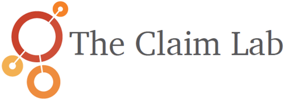August 2021 – That Ah-Ha Moment…
Sometimes there is no big ‘Ah-Ha’ moment in our projects. More often there is a gradual realization of patterns emerging in the data. A correlation that is rather unexpected and as the data accumulates, the patterns in the data become clearer, and of course the reverse is true too, when an expected dependency is disproven. However, after many of these projects we know where to look, where the likely candidates are lurking.
Behavioral Health is a fascinating area. Workplace stress, depression, anxiety we see that clearly in the data, but which comes first? Is it the job that causing the problem, or is it just a symptom….
We also see undocumented mental health issues, where the diagnosis on the claim form is very different to what we see in the psychosocial data. A rotator-cuff may be documented as the primary diagnosis, but we also see major mental health issues.

Consistency…
For this claim data to be useable it must be a consistent and an accurate measurement of the complexity of a claim. Case notes can’t provide this consistency, as there is a vast difference in the experience and opinion of case managers, as well as the varying quality of their written notes. But where the data has been collected on a consistent scale, claims can be directly compared. Is this claim more complex than another? Should this be referred for an intervention above a different claim?
How about reserving and risk? Surely such depth of understanding of the claim would help us assess claim risk and enable the modification of our termination tables. In fact, without a firm base of data, across all the bio-psychosocial aspects of a claim, how can we ever hope to understand disability or workers comp claims with a structured, repeatable, and scalable methodology.
“All Claims Are Equal…”
What about the segmentation of claims? In other words, grouping claims together into processing buckets, each with a different RTW plan for a certain risk profile?
In claims operations, we see two extremes. First is where “all claims are equal”, everyone is entitled to the full claims management service, whether a hernia or ALS…. Then, secondly, we see the “there is no defined process” and claim managers are free to manage the claim as they see fit!
Remember when we used to run those benchmarking studies, comparing claims operations across all the leading insurers, the BEST CLAIM SHOPS were the ones with a process religiously maintained. Every other sentence would start off “Our claims process….”
What works best?
Now here we are with richer and richer data, so we can identify the complex claims from the simple claims, and assign a process that we know will help that person return to work faster … not according to one case manager’s experience or judgement …. But because of reams of data across all aspects of that claim, and because of the process that’s been applied to many claims, so we know what works and when it works best…
This enables us to segment claims at a very early stage in the process to help ensure that we make the best decisions for the individual claimant and for the insurer.
This is a data driven claim process!

Data is the Overture…
We should be heading for greater automation, for a process that is driven by a set of workflow rules, that serves up the right claim to the right case manager, who is skilled at handling that type of claim. A process that knows when a claim most likely needs a light touch and progresses it down an appropriate path, driven by consistently collected information.
The sooner we all start collecting richer data, the sooner we will start understanding claims management…
The collection of the better data is the beginning, the overture, the foundation of this journey.
For more information on how we can help you collect better data, please email us at info@claimlab.org.
